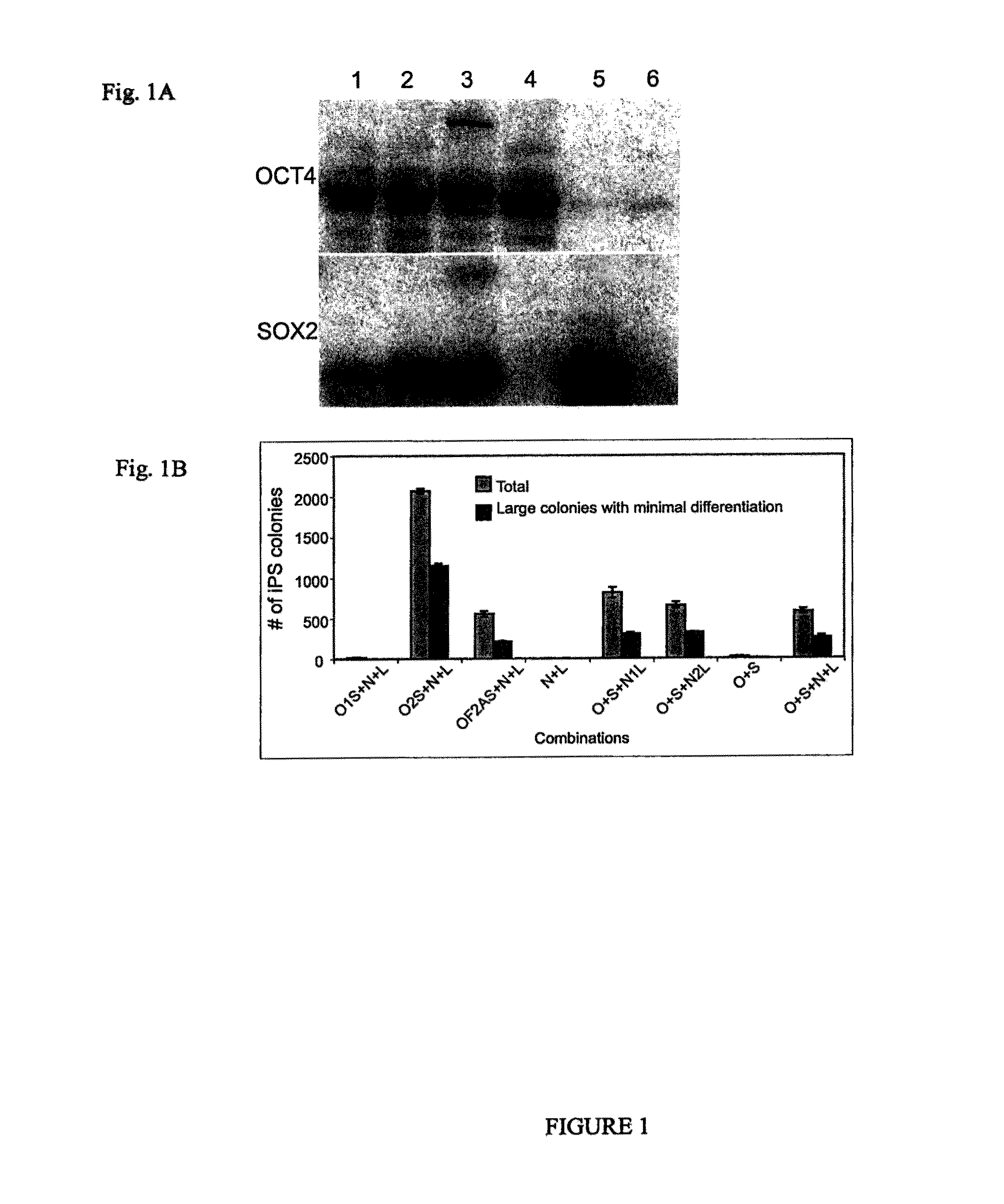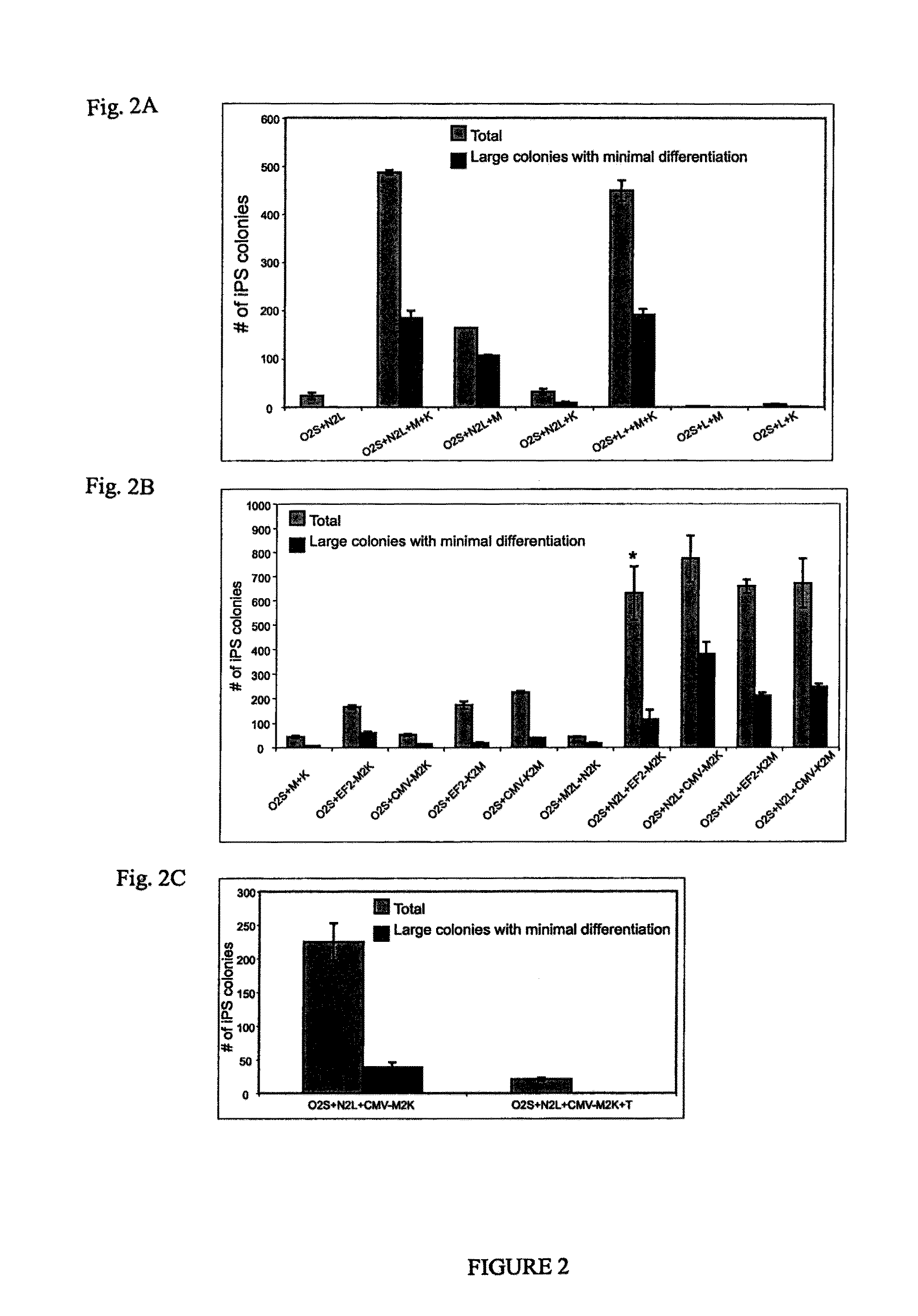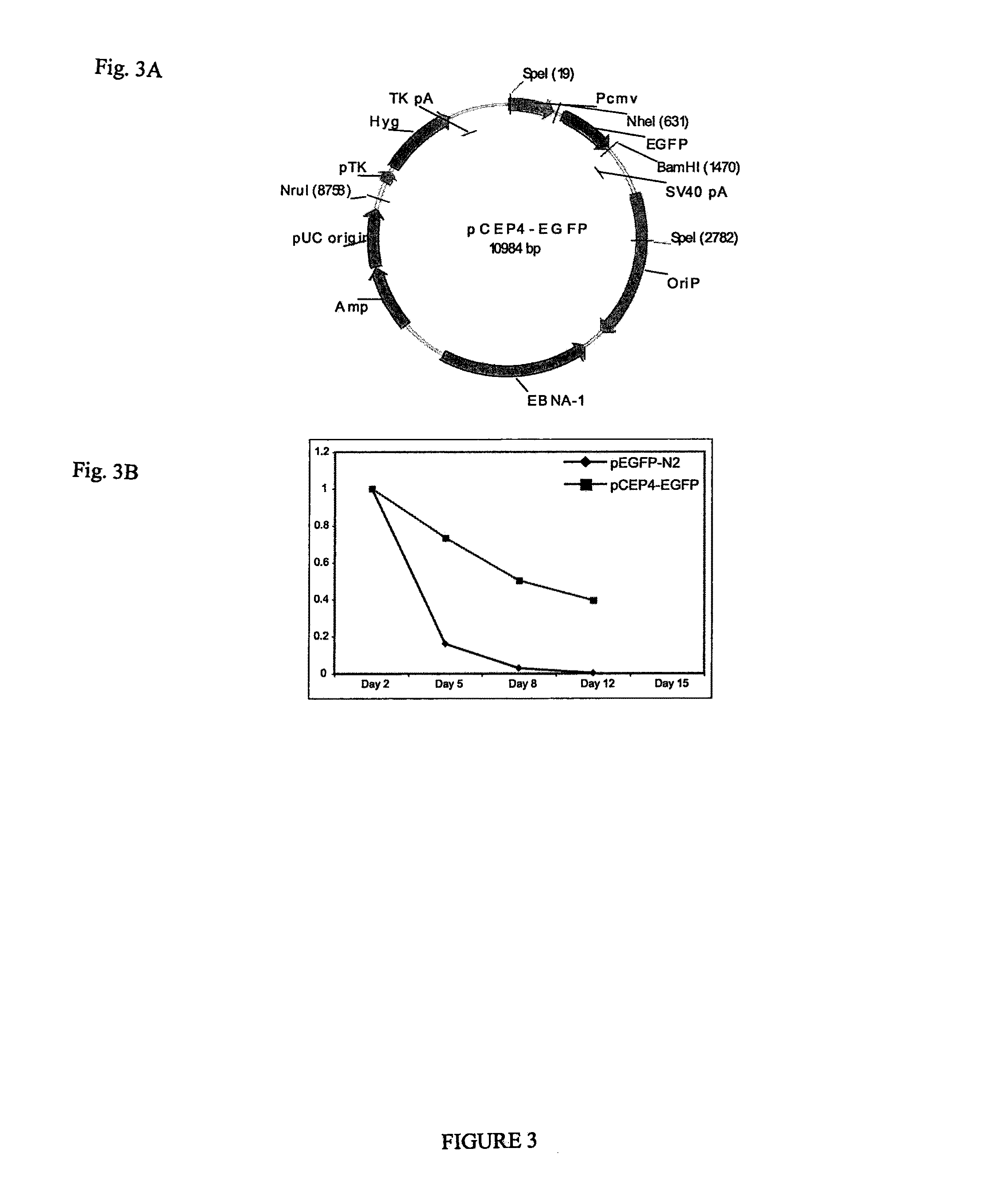OCT4 and SOX2 with SV40 T antigen produce pluripotent stem cells from primate somatic cells
a technology of sv40 t and somatic cells, which is applied in the direction of cell culture active agents, artificial cell constructs, and genetically modified cells, etc., can solve the problems of complex application of human es cells in therapy and regenerative medicine, near tetraploidy, and inability to achieve clinical use of somatic nuclear transfer
- Summary
- Abstract
- Description
- Claims
- Application Information
AI Technical Summary
Benefits of technology
Problems solved by technology
Method used
Image
Examples
example 1
Design and Construction of Expression Cassettes
[0030]Suitable expression cassettes structures were created using conventional methods by direct polymerase chain reaction (PCR) amplification of open reading frames (ORFs) from some or all of the transgenes, using the first and last 20-22 bases of the coding region as primers, and from the Internal Ribosome Entry Sites listed in Table 1. The sources of SV40 T Antigen and human telomerase reverse transcriptase, plasmids pBABE-puro SV40 LT and pBABE-hygro-hTERT, are commercially available from Addgene, Inc, Cambridge, Mass., as plasmids 13970 and 1773, respectively. The sources of IRES1 and IRES2, plasmids pIRESpuro3 and pIRES2EGFP, are commercially available from Clontech Laboratories, Inc., Mountain View, Calif. Foot-and-mouth disease virus segment 2, was chemically synthesized. In-frame expression cassettes are described using the codes set forth below in Table 1. For example, “E-O2S” refers to an expression cassette having an EF1α pr...
example 2
Reprogramming Human Newborn Foreskin Fibroblasts Using Lentiviral Constructs
[0033]Preliminary reprogramming experiments were conducted by introducing lentiviral vectors into human neonatal foreskin fibroblasts. FIG. 2A shows that NANOG has a profound positive effect on reprogramming efficiency when OCT4, SOX2, LIN28, and c-MYC are also introduced, and that in combination with OCT4, SOX2, and LIN28, NANOG can support reprogramming, even in the absence of c-MYC or KLF4. Lentiviral constructs used were pSIN4-EF2-OCT4-IRES2-SOX2 (O2S); pSIN4-EF2-NANOG-IRES2-LIN28 (N2L); pSIN4-EF2-LIN28-IRES1-PURO (L); pSIN4-CMV-c-Myc-IRES1-PURO (M); pSIN4-EF2-KLF4-IRES1-PURO (K). Twenty-one days after transduction, alkaline phosphatase-positive human iPS cell colonies were counted. The number of iPS cell colonies were derived from an input of 2.5×104 human newborn foreskin fibroblasts (passage 9). The light gray bars represent the total number of reprogrammed colonies formed having typical human ES cell...
example 3
Reprogramming of Human Newborn Foreskin Fibroblasts Using Non-viral Episomal Constructs
[0036]Human newborn foreskin fibroblasts (Cat# CRL-2097™, ATCC) were maintained in foreskin fibroblast culture medium (DMEM (Cat#11965, Invitrogen) supplemented with 10% heat-inactivated fetal bovine serum (FBS, HyClone Laboratories, Logan, Utah), 2 mM Glutamax, 0.1 mM non-essential amino acids, and 0.1 mM β-mercaptoethanol).
[0037]Various combinations of potency-determining factors provided as transgene expression cassettes constructed as in Example 1 and as detailed below in Table 3 were introduced into somatic cells using an episomal construct pCEP4-EGFP (as shown in FIG. 3A) resulting in reprogramming with varying efficiency. pCEP4-EGFP was created from commercially available mammalian episomal expression vector pCEP4 (Invitrogen Corp., Carlsbad, Calif.) by inserting the EGFP coding region between the pCEP4 BamHI and NheI sites. The episomal vectors of Table 2 were created by inserting the desi...
PUM
| Property | Measurement | Unit |
|---|---|---|
| doubling time | aaaaa | aaaaa |
| doubling time | aaaaa | aaaaa |
| elongation factor | aaaaa | aaaaa |
Abstract
Description
Claims
Application Information
 Login to View More
Login to View More - R&D
- Intellectual Property
- Life Sciences
- Materials
- Tech Scout
- Unparalleled Data Quality
- Higher Quality Content
- 60% Fewer Hallucinations
Browse by: Latest US Patents, China's latest patents, Technical Efficacy Thesaurus, Application Domain, Technology Topic, Popular Technical Reports.
© 2025 PatSnap. All rights reserved.Legal|Privacy policy|Modern Slavery Act Transparency Statement|Sitemap|About US| Contact US: help@patsnap.com



